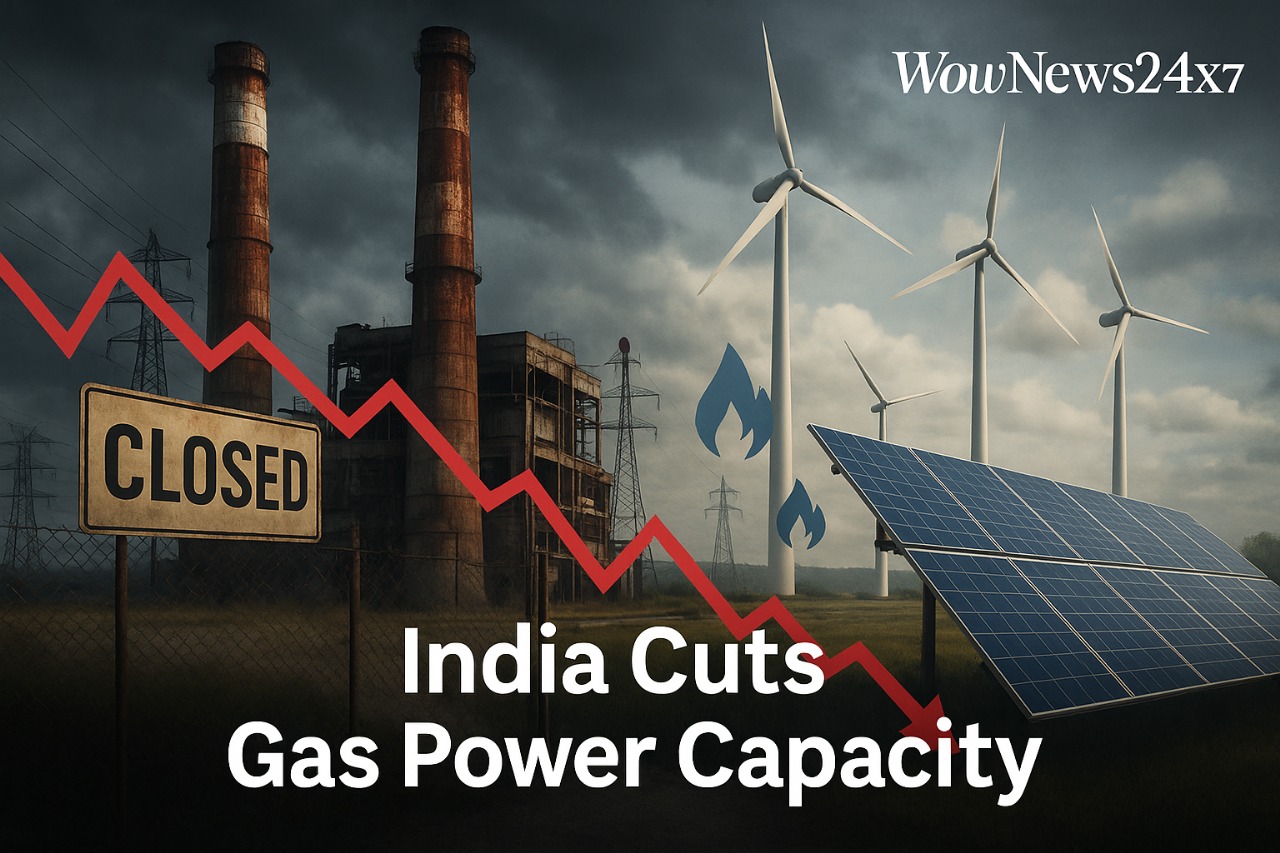
Follow WOWNEWS 24x7 on:
Updated: May 21, 2025 07:32

India has reduced about five gigawatts of gas-fired capacity after years of inactivity and elevated fuel costs made numerous plants impossible to operate permanently. The action represents a sharp reduction in the country's gas power fleet, now down to 20.1 GW in April from 25.2 GW a month ago, based on the Central Electricity Authority. The shutdowns are strongest in Andhra Pradesh, with several projects reliant on declining supplies of Reliance Industries' KG D6 field closing down.
The country’s gas power industry has long struggled with uncompetitive prices, leading to chronically low utilization rates. In the year through March, gas-fired generators operated at just 14.5% of capacity, with some southern projects running at less than 4%. Many idle plants have become so degraded that they are no longer fit for use, with some even selling off machinery.
This diminution in gas capacity is coming at a timely moment. India is experiencing increasing electricity demand, especially on summer nights when solar production declines and air-conditioner usage reaches its peak. The power ministry has come in by invoking Section 11 of the Electricity Act, asking remaining gas-based plants to pump out as much power as possible on high-demand days, with prior notice from GRID-INDIA to maintain adequate gas supply.
Key Highlights
India has retired 5 GW of gas-based power capacity because of extended non-operating times and elevated gas prices.
The gas-based fleet is now 20.1 GW, down from 25.2 GW in April.
Andhra Pradesh accounted for the most retirements, attributed to falling production of the KG D6 gas field.
Gas-based plants had an average of only 14.5% utilization last year, with some southern schemes less than 4%.
The government is pressing other gas plants to increase production during peak demand, particularly when solar power declines in the evenings.
The reduction has raised issues of ensuring summer electricity requirements during peak demand and depleted backup capacity.
Source: Business Standard, Economic Times, Devdiscourse, Bloomberg






